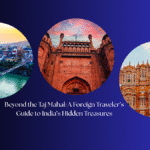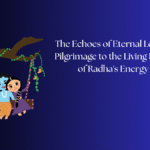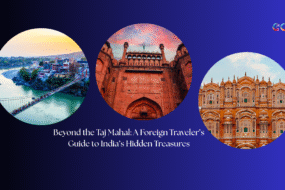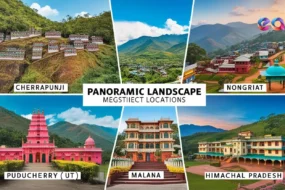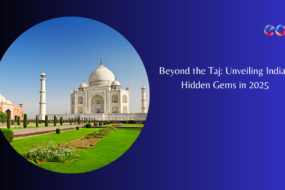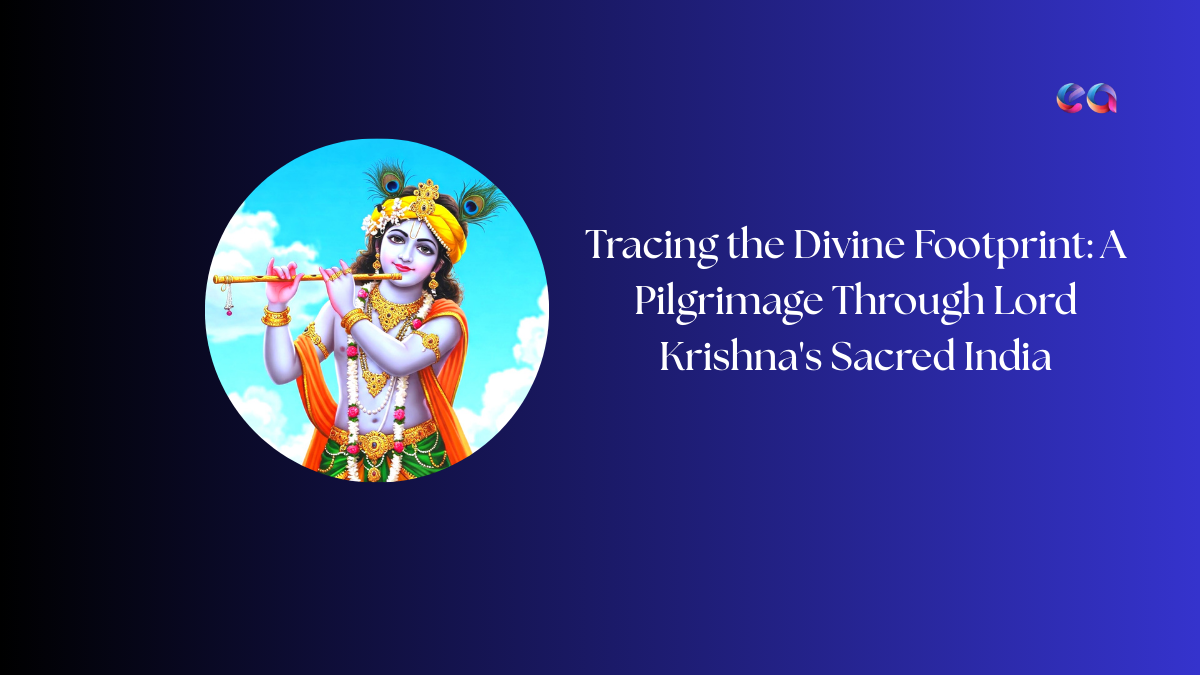
This report invites exploration of the timeless footprint of Lord Krishna across India, journeying through six cities where his mythic presence still resonates among ancient temples, bustling ghats, and spiritual landscapes. Each destination offers a unique glimpse into the life and legacy of the divine cowherd, hero of the Mahābhārata, and beloved deity whose stories continue to inspire millions.
Lord Krishna is one of the most widely revered and popular Indian divinities, worshipped as the eighth incarnation (avatar) of the Hindu god Vishnu, and also as a supreme god in his own right. His multifaceted identity encompasses diverse roles: from a mischievous child and a beloved cowherd to a wise king, a strategic charioteer, and a profound spiritual guide. His life, spanning approximately 125 years, is regarded as a model for humanity, imparting profound teachings on devotion and dharma. The core of Krishna’s mythology is found in the epic Mahabharata, its appendix the Harivamsha, and the Puranas, particularly the Bhagavata-purana. These texts relate his birth, childhood, heroic deeds, and his ultimate role as a divine preceptor.
Make your contribution towards up coming world’s tallest temple
The cities of Mathura, Vrindavan, Dwarka, Kurukshetra, Puri, and Nathdwara form a sacred circuit, each representing a pivotal chapter in Krishna’s earthly leelas (divine pastimes). These leelas are not merely historical events but are understood as divine plays that continue to unfold and influence the spiritual landscape. This perspective suggests that a pilgrimage through these sites is not just a historical tour but an immersion into a living, spiritual narrative, where devotees can experience the echoes of these divine acts. The “timeless footprint” of Krishna is precisely this ongoing resonance of his divine pastimes, making each location a vibrant center of living faith.
The following table provides an overview of the primary associations and key highlights of each city within this sacred circuit:
| Location | Primary Association | Key Highlight |
| Mathura | Birthplace | Krishna Janmabhoomi, Vishram Ghat |
| Vrindavan | Childhood Leelas | Nidhivan, Banke Bihari Temple, Kesi Ghat |
| Dwarka | Kingdom | Dwarkadhish Temple, Submerged City Legends |
| Kurukshetra | Battlefield of Dharma | Jyotisar (Bhagavad Gita), ISKCON Temple |
| Puri | Lord of the Universe | Jagannath Temple, Ratha Yatra, Mahaprasad |
| Nathdwara | Abode of Shrinathji | Shrinathji Temple, Pichhwai Paintings, Pushtimarg Seva |
Mathura: The Cradle of Divinity
Mathura, nestled on the banks of the Yamuna River, holds profound significance as the very spot where Lord Krishna is believed to have been born. The central pilgrimage site is the Krishna Janmabhoomi complex, a cluster of shrines built around the prison cell believed to have confined his parents, Vasudeva and Devaki. This confinement was a result of King Kamsa’s tyrannical efforts to thwart a prophecy foretelling his demise at the hands of Devaki’s child.
The history of this sacred site is a testament to the enduring resilience of faith. Archaeological findings indicate that the place has held religious significance since at least the 6th century BCE. Over centuries, the temples on this site faced repeated destruction by invaders, notably by Mahmud of Ghazni in 1017-1018 CE and by the Mughal emperor Aurangzeb in 1670 CE, who erected the Shahi Eidgah mosque upon its ruins. Despite these attempts to obliterate its religious identity, the land was consistently reclaimed and rebuilt. This pattern of destruction followed by renewed construction, culminating in the magnificent modern complex built after a trust acquired the land in 1951, vividly illustrates the profound attachment and perseverance of the Hindu community. The spiritual importance of Mathura transcends physical structures or political dominance, acting as a powerful symbol of cultural and religious identity where faith serves as a driving force for preservation and continuity, even in the face of severe persecution. The present complex features a marble pavilion and an underground prison cell, with its walls adorned with frescoes depicting Krishna’s life events and verses from the Bhagavad Gita.
Pilgrims also gather at Vishram Ghat on the Yamuna, a revered spot where Krishna is said to have rested after slaying the wicked King Kamsa. This act fulfilled the prophecy and marked a pivotal moment in Krishna’s early life, signifying the triumph of good over evil. The traditional parikrama (circumambulation) of Mathura commences and concludes at this ghat, emphasizing its central role in the city’s spiritual practices.
Beyond its temples and ghats, Mathura’s cultural fabric is rich with traditions, including its famous “peda”—milk sweets that have received Geographical Indication (GI) status, recognizing their unique origin and cultural importance. These sweets are not merely a local delicacy; they are believed to have originated from temple priests as offerings to Lord Krishna and are an indispensable part of religious festivals and Prasad (sanctified food offerings). This practice exemplifies how everyday cultural elements, such as food preparation, are deeply intertwined with religious life, serving as tangible expressions of devotion and community identity. It demonstrates how faith permeates and shapes the very fabric of local culture, making the spiritual landscapes truly living and experienced. Mathura also served as a significant stage for Krishna’s early leelas beyond his birth. After being smuggled across the Yamuna to Gokula and raised by Nanda and Yashoda to escape Kamsa’s wrath, Krishna eventually returned to Mathura to confront his maternal uncle. His entry into the city is described as a grand event, where he was admired by its citizens and performed early miracles, such as healing the hunchback Trivakra and defeating Kamsa’s royal clothes maker.
Vrindavan: Echoes of Divine Play:
Just a short drive from Mathura, Vrindavan unfolds as the vibrant heart of Braj Bhumi, an expansive region spanning approximately 3,000 square kilometers. It is widely believed to be the sacred land where Krishna spent his formative years, frolicking with his cowherd friends and his beloved Radha. The entire landscape of Braj is intimately linked to Krishna’s leelas, with every natural and man-made feature often attributed to an aspect of his divine life.



